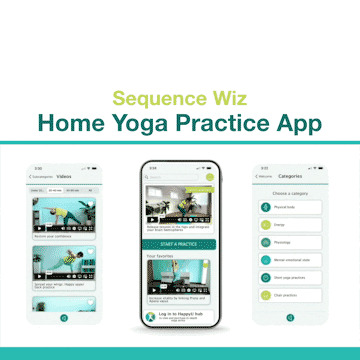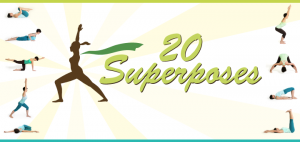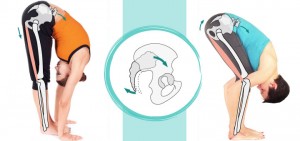The secret formula that will grow your yoga business
0I don’t know a single yoga teacher who chose to teach yoga to make money. Some yoga studio owners, maybe, but usually not individual yoga teachers. This is not a lucrative profession, and we usually get into it because we experience the benefits of yoga practice ourselves and wish to share them with others. That is why most yoga teachers are much more interested in deepening their yoga knowledge and working on their craft, rather than promoting themselves. Unfortunately, in the current climate we might have no choice in the matter. Since we cannot rely on yoga studios, gyms and other locations in the near future to bring yoga students to us, we are left to our own devices and have to figure out a way to find and attract those students ourselves. What can you offer to those potential students and how will you distinguish yourself from other yoga teachers who are trying to do the same thing? You do it by becoming part of their story.
As humans we are programmed to respond to stories. This idea has been used in marketing for decades, it’s nothing new. But Donald Miller in his book Building a StoryBrand: Clarify Your Message So Customers Will Listen boiled it down to a formula that is very easy to implement to promote your services. The whole book is a delightful read, and I recommend it if you want to build a strong foundation for your yoga brand, big or small. I wanted to take some time to apply lessons from this book to our specific profession (yoga teachers) and specific situation (transitioning to online teaching because of social distancing).
The cornerstone of effective communication with your potential yoga students is Abraham Maslow’s hierarchy of needs (or you can think of it as a Chakra model, if you are so inclined 🙂). Each one of us has needs that have to be met for us to survive and thrive.
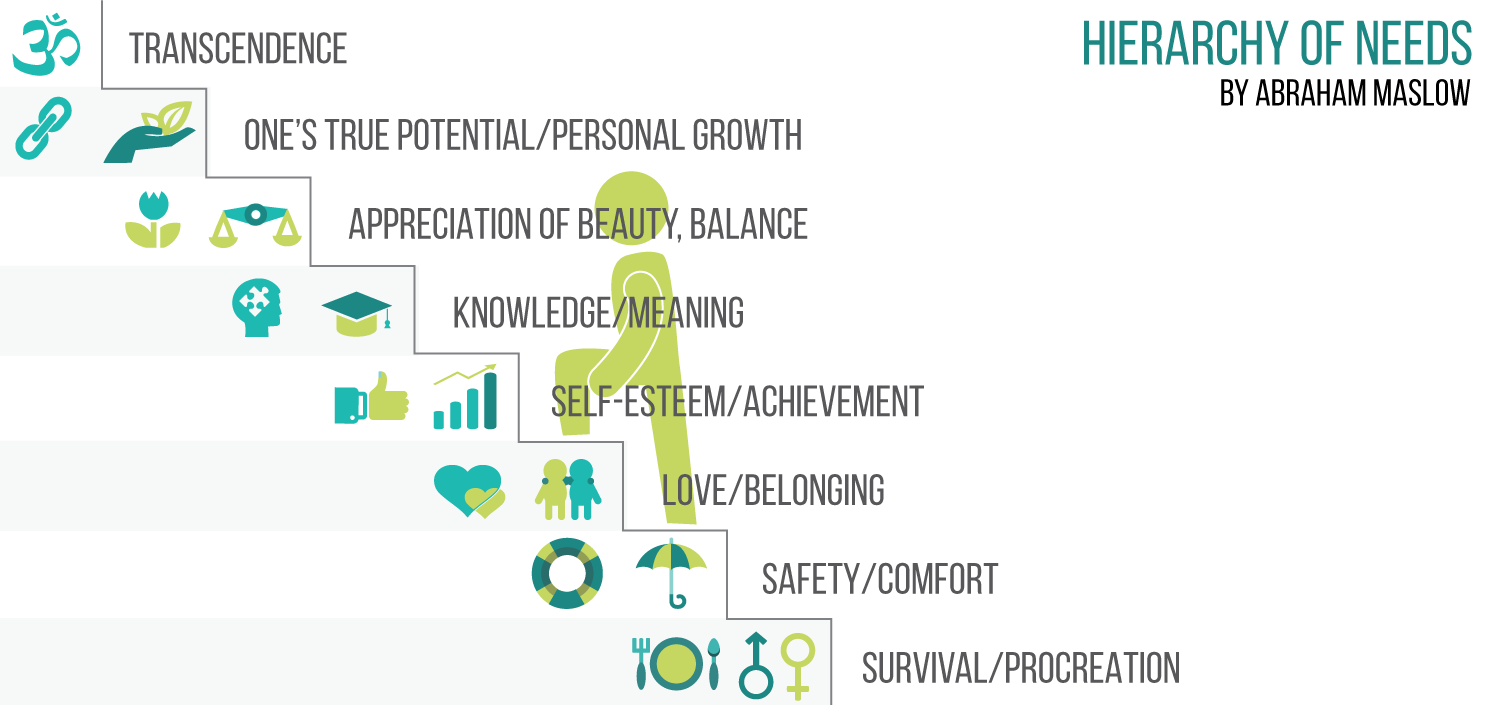
Our brains are constantly scanning our environment for things that help us survive and thrive. You have to position your services in terms of one or more basic needs that will be met for your students through your services. Donald Miller writes: “This means that if we position our products or services as anything but an aid in helping people survive, thrive, be accepted, find love, achieve an aspirational identity, or bond with a tribe that will defend them physically and socially, good luck selling anything to anybody.”
As yoga teachers we are in luck, because we literally offer people tools that help them thrive physically, physiologically, emotionally and spiritually. The problem is that often we are not very successful in communicating it. We tend to speak in generalities instead of being specific. The message of “I will help you thrive physically” is very generic and doesn’t resonate with individual people. Your potential students will have to work way too hard to figure out what you mean exactly and how it applies to their day-to-day life. But if instead you promise them relief from eye strain, back pain and foggy mind that comes from spending too much time on their screens, you will have a much more receptive audience.
This brings us to the next important point – don’t make your audience work too hard to understand you when you describe your services to them. Mike McHargue of Ask Science Mike podcast says: “Processing information demands that the brain burn calories. And the burning of too many calories acts against the brain’s primary job: to help us survive and thrive.” If the message you give them is too long or too confusing, they will stop listening and shift their attention to something else. Donald Miller writes: “When we start our elevator pitch or keynote address, or when somebody visits our website, they’re burning calories to process information we are sharing. And if we don’t say something (and say something quickly) they can use to survive or thrive, they will tune us out.” Any communication you put out there (and particularly your website) needs to be able to pass a “grunt test”. You need to be able to answer a question: “Could a caveman look at my website and immediately grunt what I offer?” Within five seconds of looking at your website or marketing materials anybody should be able to answer the following questions:
- What do you offer?
- How will it make my life better?
- What do I need to do to buy it?
For example, if the caveman looked at the website of Rachel Lanzerotti, a yoga therapist, he would be able to grunt: “You sell pain relief through movement, me be able to hunt again, me get it online.”
We think that we need to explain everything to our students, but we don’t. They don’t need to know every single thing we do or how we do it, what our philosophy is or where we come from. If we don’t show them exactly how our services will make their life better, all our verbiage becomes noise.
To help our customers grasp the main idea of what we do and how it would benefit them, we present it as a story of a hero’s journey, where our customer is the hero. There are particular story formulas that are embedded in our brains and show up again and again in books and movies. We need to apply those formulas to our messaging for our potential students to hear and understand us. According to Donald Miller, story is the best “sense-making device,” it turns background noise into a symphony. He says that a story that follows a preset framework is the equivalent of a well-choreographed piece of music, while an average corporate website is the equivalent of “a cat chasing a rat through a wind-chime factory.”
Donald Miller writes: “In a story, audiences must always know who the hero is, what the hero wants, who the hero has to defeat to get what they want, what tragic thing will happen if the hero doesn’t win, and what wonderful thing will happen if they do. If the audience can’t answer these basic questions, they’ll check out.”
Here is the simplest formula of pretty much every successful story: “A CHARACTER who wants something encounters a PROBLEM before they can get it. At the peak of their despair, a GUIDE steps into their lives, gives them a PLAN, and CALLS THEM TO ACTION. That action helps them avoid FAILURE and ends in SUCCESS.”
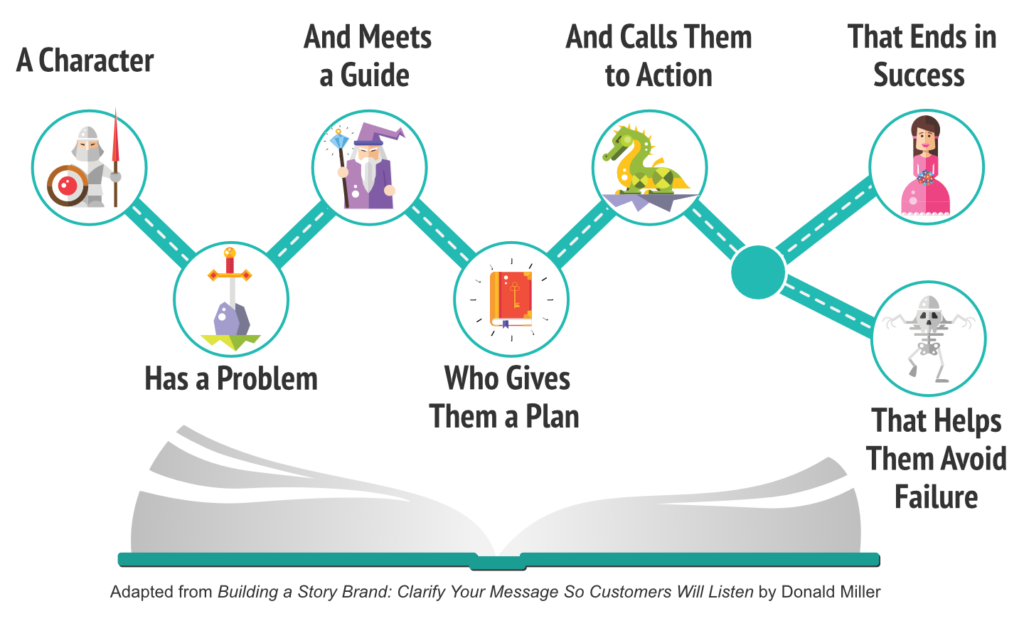
Applied to the case of a yoga teacher, it looks like this:
A CHARACTER (your potential student) who wants something (you need to figure out exactly what they want) encounters a PROBLEM (what kind of issue is your target student dealing with?). At the peak of their despair, a GUIDE (you) steps in, gives them a PLAN (a yoga practice) and CALLS THEM TO ACTION (you take steps to encourage their participation). That action helps them avoid FAILURE (where are they going to be without yoga? How bad can their problem get?) and ends in SUCCESS (how will they feel if they if they faithfully follow your yoga practices? What does success look like to them?)
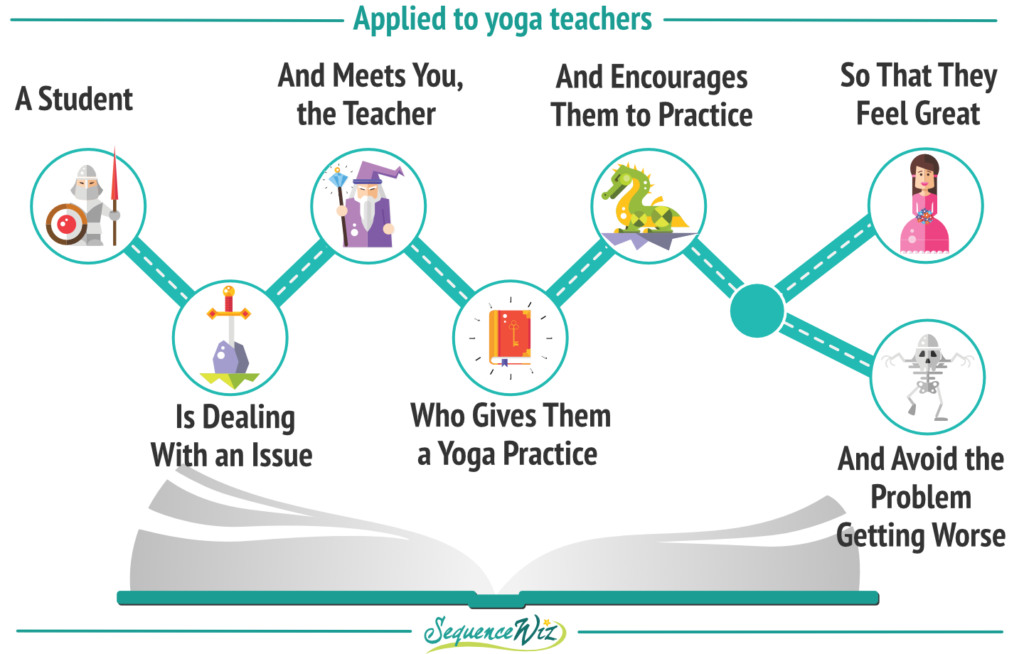
For our potential students to be able to hear us, understand us and appreciate the value of our services, we have to apply those same plot lines to every piece of communication we put out there, whether it’s an in-person interaction, a website, a newsletter, or a social media post. Over the next few weeks we will take a closer look at each one of those elements and how you can make them work for your messages – tune in!
[jetpack_subscription_form]
References
1. Building a StoryBrand: Clarify Your Message So Customers Will Listen by Donald Miller







